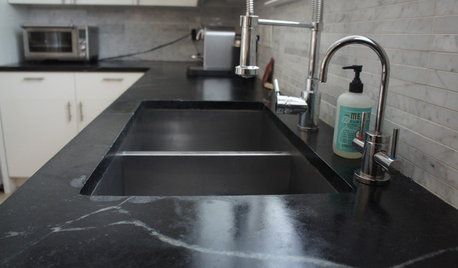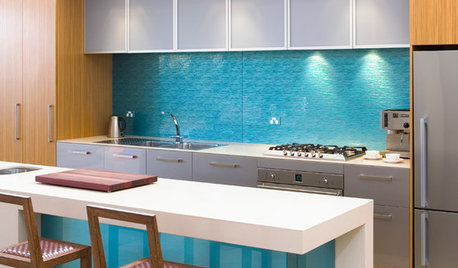Easy Peasy Ventilation Question...promise.
beekeeperswife
12 years ago
Related Stories

SELLING YOUR HOUSE15 Questions to Ask When Interviewing a Real Estate Agent
Here’s what you should find out before selecting an agent to sell your home
Full Story
GARDENING GUIDES10 Easy Edibles for First-Time Gardeners
Focus on these beginner-friendly vegetables, herbs, beans and salad greens to start a home farm with little fuss
Full Story
KITCHEN DESIGNA Cook’s 6 Tips for Buying Kitchen Appliances
An avid home chef answers tricky questions about choosing the right oven, stovetop, vent hood and more
Full Story
DECORATING GUIDESDecorating Secrets: Picture-Perfect Way to Hang Art
Save your drywall with these easy steps for hanging framed pieces
Full Story
KITCHEN STORAGEStyle Your Open Kitchen Shelving Like a Pro
Follow these do’s and don’ts for arranging items on your kitchen shelves
Full Story
BASEMENTSDesign Workshop: Is It Time to Let Basements Become Extinct?
Costly and often unnecessary, basements may become obsolete — if they aren’t already. Here are responses to every reason to keep them around
Full Story
KITCHEN DESIGNSoapstone Counters: A Love Story
Love means accepting — maybe even celebrating — imperfections. See if soapstone’s assets and imperfections will work for you
Full Story
KITCHEN DESIGNHouzz Quiz: Which Kitchen Backsplash Material Is Right for You?
With so many options available, see if we can help you narrow down the selection
Full Story
BATHROOM DESIGN14 Design Tips to Know Before Remodeling Your Bathroom
Learn a few tried and true design tricks to prevent headaches during your next bathroom project
Full Story
LIFEThank U 4 the Gr8 Gift: How to Send Thanks in the Digital Age
We click open invitations and RSVP via text, but a handwritten thank-you is sometimes still best. Here's how to tell
Full StoryMore Discussions







john_com
beekeeperswifeOriginal Author
Related Professionals
Arlington Kitchen & Bathroom Designers · Highland Kitchen & Bathroom Designers · West Virginia Kitchen & Bathroom Designers · South Barrington Kitchen & Bathroom Designers · Plainview Kitchen & Bathroom Remodelers · Elk Grove Kitchen & Bathroom Remodelers · Ewa Beach Kitchen & Bathroom Remodelers · Kuna Kitchen & Bathroom Remodelers · Londonderry Kitchen & Bathroom Remodelers · Olney Kitchen & Bathroom Remodelers · San Juan Capistrano Kitchen & Bathroom Remodelers · Cave Spring Kitchen & Bathroom Remodelers · Effingham Cabinets & Cabinetry · Newcastle Cabinets & Cabinetry · Tacoma Cabinets & Cabinetrykaseki
kellienoelle
john_com
tncraft
beekeeperswifeOriginal Author
kellienoelle
tncraft
JCWR56
clinresga
kaseki
beekeeperswifeOriginal Author
davidro1
rococogurl
clinresga
john_com
regbob
clinresga
rococogurl
john_com
kaseki
kaseki
kaseki
alexrander
john_com
kaseki
weedmeister
alexrander